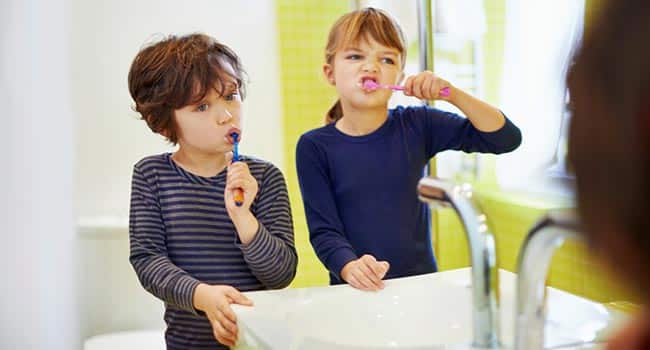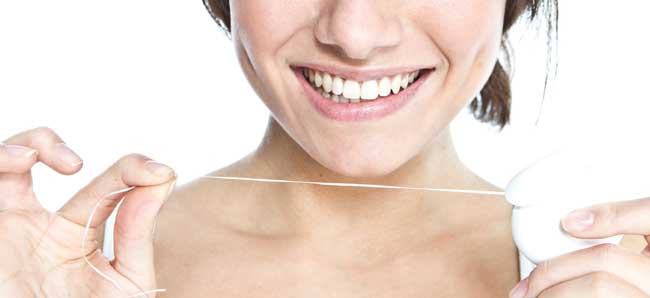Why do I Need Professional Teeth Cleanings?

Why do I Need Professional Teeth Cleanings? Let’s look at five reasons why you should get your teeth regularly cleaned. 1. We check for oral cancer With cancer, the sooner it’s detected the better chance you have of successfully getting rid of it. Oral cancer is no different. During each teeth cleaning, we check for any signs of oral cancer. 2. Cleanings help prevent cavities Brushing and flossing every day will do wonders in maintaining a healthy mouth. But, sometimes you may forget to floss, or maybe you had a few too many sodas and candy bars. Our dental hygienists will ensure that your mouth is free of plaque, and can also give you tips for your at-home cleaning if they see something you may not be doing. 3. Cleanings help prevent gum disease Gum disease can easily creep up on anyone. It is often painless until it becomes a bigger problem. When diagnosed with gingivitis, it can still be reversed with proper gum maintenance. Once gingivitis progresses to periodontal disease, it requires ongoing professional care to prevent further damage to your mouth. Professional cleanings at twice a year drastically reduce the risk of gum disease ever starting. 4. Having a healthy mouth contributes to a healthy life Poor oral health has been connected with diagnoses for diabetes, heart disease and pregnancy complications. Keeping your gums and teeth healthy will help prevent the occurrence of these diseases. 5. Regular cleanings are cheaper than taking care of oral problems Receiving two professional cleanings a year may be an expense you don’t like to see. However, teeth cleanings are much cheaper than other procedures, such as root canals, scaling and root planing, and dental implants. There is nothing better than a freshly cleaned mouth! Our dental hygienists will make sure you have pain free experience, and you can leave knowing you’ve taken a giant leap forward in maintaining a healthy smile. If you have more questions about our professional teeth cleanings, or if you’d like to schedule an appointment, please call your Palmdale dentist at 661.202.3542.
How to Get Rid of Canker Sores

Imagine you are eating a big, juicy steak cooked to perfection. You cut out a chunk of steak place it in your mouth. The first bite is delicious, and the second bite is even better. But then, in your fervor for chewing, you forget where the steak ends and where your cheek begins. Before you know it–chomp!–a bite that was intended for that tasty piece of steak caught your cheek. It’s painful and irritating, but you can get past the pain. The next day, your wound is healing well, but unfortunately during lunch you bite down on it again. Now it’s official: you have a full blown canker sore. While not all canker sores are self-inflicted, it’s good to know what causes canker sores and some remedies you can implement to promote healing while reducing pain. For the most part, canker sores are more of a nuisance than a health issue. They can appear on the inside of your lips, cheeks and on your tongue. They can either be caused by trauma (like biting on the inside of your cheek or braces irritating your mouth) or other factors like stress and the types of food you eat. Avoid agitating your canker sore Try not to hit it with your toothbrush. Steer clear of foods that will annoy your canker sore, including crunchy, dry, or acidic foods–especially citrus! If you have braces, apply wax where the canker sore comes in contact with them. If your braces or dentures continue to cause discomfort and canker sores, your dentist may be able to make the proper adjustments to fix the issue. Since most canker sores go away on their own, the best thing you can do is manage the pain Gargle with salt water. Mix about ¼ to ½ teaspoons of salt with eight ounces of warm water. Put about two to three ounces of water into your mouth at a time and swish it around for 20-30 seconds, then spit it out. Continue to do this until all of the water is gone. Consider using a local numbing agent. Products like Oragel can be applied to the canker sore and numb it for temporary relief. These types of products contain benzocaine, so please read all cautions before applying. Take over-the-counter pain relief medication, like ibuprofen. If your canker sore doesn’t heal within a few weeks, it’s time to see a dentist. If your canker sore makes it too painful to eat or drink, consider seeing your dentist before the three week mark. Make an appointment with your local Palmdale dentist if you think you may need additional canker sore treatment.
Teaching Kids to Care for Their Teeth

How to Teach Kids to Care for Their Teeth (and a Little about Why and When, Too) If you’re a parent, you’ve probably tried every type of motivation—reasoning, cajoling, nagging, threatening punishments, even bribery—to get your kids to do things that they just really need to do. Eating vegetables. Getting dressed for school. Going to bed. And yes, brushing their teeth. Oral Hygiene Is Important Good oral hygiene is about more than a winning smile. It contributes to our sense of self-esteem and confidence—and what parent doesn’t want a child who’s happy, confident, and proud of him or herself? What you might not know is that oral health contributes greatly to your—and your child’s—long-term holistic health. Poor oral health is linked to diseases including obesity, diabetes, and even heart disease. Encouraging your children to take care of their teeth sets them up for a lifetime of good oral health—and good health in general. Start early—but focus on the big picture One way to make sure children take oral hygiene seriously is by starting early. Wipe their gums with a soft washcloth after bottle feedings, and once their baby teeth come in, brush them twice a day with a soft toothbrush and water. Toddlers aged two to four can begin brushing by themselves, preferably for two minutes, but don’t use fluoride toothpaste until your child knows not to swallow it. Start flossing your children’s teeth around the same time, as their teeth start to fit closely together. If you haven’t already brought them in for a first dentist’s visit, now is the time to start as well. Children don’t have the coordination to do as thorough a job as adults. They may not even be able to use dental floss until they’re 10 or so.; (Floss picks are easier for young kids.). But the key is to begin building good oral hygiene habits early on in life. Make sure your children understand the basics: Brush twice a day. Floss every day. Avoid sugary foods and drinks. Visit a dentist regularly for checkups. Set a good example. “Do what I say, not what I do.” There’s always a temptation to tell others—kids, especially—to behave a certain way, even if we don’t always do so ourselves. Be kind to strangers. Share. Be generous. But children learn more by watching their parents and friends every day. If you take good care of your teeth, they’ll learn implicitly that oral hygiene is important and worth practicing. It’s understandable that bathroom routines are “private time,” but don’t be shy about brushing or flossing in front of little ones. They’ll pick up good habits that way. Make it fun! What parent hasn’t turned a boring or unpleasant chore into some sort of a game in order to convince a child to participate? The answer: zero. And that’s a fact. Here are some simple ways you can turn oral hygiene into something more fun for kids: Let Them Pick Their Toothbrush Kids often feel like they don’t have choices—so let them pick out a toothbrush with their favorite character on it or a toothpaste flavor they like. There are so many cute character-themed toothbrushes on the market that it should be easy to find a fun toothbrush to help make brushing enjoyable. Having a fun brush will help kids be more invested in brushing their teeth. You may even find a character-themed toothbrush you like for yourself. Play Creative Dental Games Turn brushing their teeth into something fun instead of a nightly chore. Encourage them to brush their stuffed toys’ teeth while telling them how important it is to brush and floss. Colgate has several dental game ideas that teach kids the importance of caring for their teeth and gums. Read Books About Teeth, Cleaning Teeth and Visiting the Dentist Many kids love bedtime stories. Use this fun activity to help prepare them to visit the dentist by reading them a story about dental care. Reward Them When you child does a good job brushing and flossing give them a reward. Candy may not be the best option here but perhaps you can give them a quarter or let them pick the 2nd book to read at bedtime. Perhaps a dental book? Remember, we’re here to help. Day-to-day hygiene routines are the foundation of lifelong oral health, so there’s no substitute for the time you spend with your children, teaching them the fundamentals of brushing and flossing. But at AV Sierra Dental Center, we’re here to help. When you bring your child in for a visit, let us know if you have any concerns or issues you’d like to discuss. We want to make sure that your kids have a positive, friendly, age-appropriate dental experience each and every time they come to our office.
How Does Diabetes Affect Your Mouth?

What You Need To Know: The Effect Diabetes Has On Oral Health Diabetes affects every aspect of your life. From ensuring your blood sugar is at the right level to keeping up with regular exercise, managing diabetes is no easy task. You must be aware of many complications that can arise from diabetes, and your oral health is no exception. Since it’s National Diabetes Month, we have provided information and tips to consider regarding the relationship between diabetes and your oral health. According to the Centers for Disease Control, 29.1 million Americans have diabetes—and 8.1 million of those do not know they have the disease. If you’re not sure if you might have diabetes, the first step to taking care of your body is finding out if that’s the case. Some common symptoms of diabetes include: Blurred vision Hunger and fatigue Peeing more frequently while also being thirstier Dry mouth and itchy skin More symptoms that can indicate longer term damage caused by diabetes include: Yeast Infections (for both genders) Pain or numbness in your legs and feet Cuts or sores that heal slowly If you are experiencing these symptoms, go see your physician and get tested for diabetes. For your oral health, the symptoms take a while longer to show that actual damage that is occurring in your mouth if left untreated. Keep notice for symptoms like: Puffy, swollen gums that bleed when brushed or flossed Loose teeth Bad breath Receding gums These are all signs of gingivitis, which if left untreated, can turn into periodontitis. How does diabetes contribute to gum disease? There are a few major ways diabetes affects your mouth. First, if your blood sugar levels are left unchecked, the glucose level of your saliva rises. Glucose is a type of sugar, and bacteria loves sugar, which will speed up the progress of gum disease. Second, with diabetes, your blood vessels thicken, making it harder for them to deliver oxygen and nutrients, as well as to take away waste. Lastly, a symptom of diabetes is dry mouth. Saliva helps keep the bacteria from sticking to your teeth, and a lack of saliva makes it easier for plaque and tartar to develop. How do I prevent gum disease caused by diabetes? Control your blood sugar levels. This is done in many ways, such as taking insulin injections, eating different foods, exercising, and visiting your physician regularly. Brush and floss every day — This advice may seem obvious, but it’s tried and true. Removing plaque from your gumline and stimulating your gums are an excellent way to prevent gum disease. Visit your dentist for teeth cleanings — If you don’t have signs of gum disease yet, stay up to date on your regular teeth cleaning every six months. If you do have gingivitis or periodontal disease, a deeper clean will be required to prevent further tooth damage. Whether you have diabetes or not, it is still very important to take care of your mouth. Recent studies have shown that not only are people with diabetes more likely to be afflicted by periodontal disease, but people with periodontal disease are more susceptible to getting diabetes as well. While diabetes and periodontal disease can affect your quality of life, if treated early and often, you can mitigate much damage caused by these diseases. Call 661.202.3542 to see how we can help today. Sources: https://www.diabetes.org/living-with-diabetes/treatment-and-care/oral-health-and-hygiene/diabetes-and-oral-health.html https://www.diabetes.org/living-with-diabetes/treatment-and-care/oral-health-and-hygiene/warning-signs.html https://www.mouthhealthy.org/en/az-topics/d/diabetes
Should You Keep Flossing?

Flossing: In or Out? It’s been six months since your last teeth cleaning. You arrive at your appointment and get called to head to the back by your hygienist. As she begins cleaning your teeth, she asks the question we all dread. “How often do you floss?” If you’re like many people, you might stretch the truth, or justify telling a white lie since you DID use a toothpick after dinner a few nights back. Maybe now—lucky you!–you won’t have to answer that question any longer. Just recently the USDA and Department of Health and Human Services stated that flossing has been not been proven to be effective, and removed it from their dietary guidelines. Well, slow down, my friend. You’re not off the hook just yet. While this bold statement is technically true, there are still a few things to consider. First, the guidelines don’t say that flossing is bad or ineffective; they’re just saying there isn’t enough evidence in studies to prove it does help. The difference may feel like a matter of semantics, so for your own peace of mind, ask any dentist if you should floss. But you probably already know what their answer will be. Your teeth consist of five surfaces, and brushing your teeth will hit all but two. Flossing will take care of the two remaining surfaces (the surfaces between your teeth) and ensure that plaque does not become tartar, which eats away at your teeth and gums. While flossing can help prevent tooth decay, a study by the Central for Disease Control shows that only 30% of the U.S. population flosses daily. If you’re one of the 70% of people who don’t floss daily, you should know there are many alternatives to floss out there that can be just as effective in cleaning between your teeth. Interdental Brushes – These are little brushes that you used to brush in between your teeth. People find these much easier to use than floss, and are good for people who have braces or larger gaps between their teeth. Waterpik – The waterpik shoots a small, strong stream of water that can fit between small crevices in your teeth. It’s great to use for washing away plaque that can gather in pockets, but can take more time to master than floss or interdental brushes. Floss Picks – A floss pick is a small piece of floss attached to a handle. These have become popular in recent times due to how convenient they are to use, but there are a few things to consider when using them. Since the floss is attached to a handle, manipulating the floss to hit all of the surfaces of your teeth can be difficult. Additionally, the recommended amount of floss to be used in a session is 12-18 inches, and the typical floss pick is only about two inches. Consider using more than one floss pick per session. Regardless of what technique you use to clean between your teeth, the overall consensus is that anything is better than nothing. Have a difficult time flossing every day? Start by doing it three times a week. Flossing takes time and doesn’t give immediate results, but think of it as an investment in your mouth’s future. If you have any concerns about flossing, reach out to your Palmdale, CA dentist today. Just think about how good it will feel to tell your dentist and hygienist that you’ve been consistently cleaning in between your teeth!


